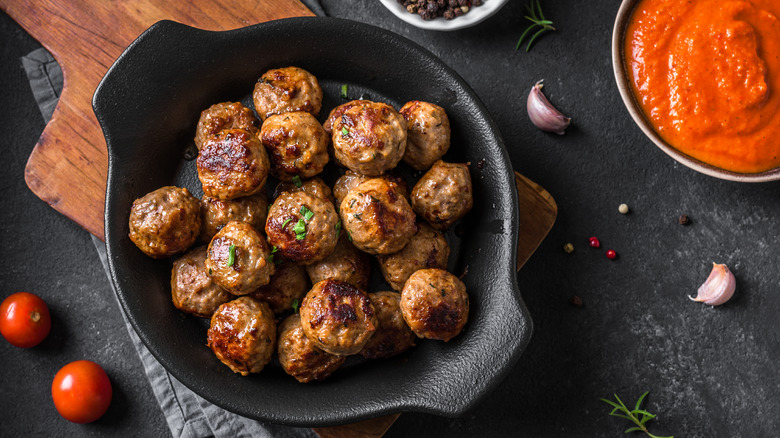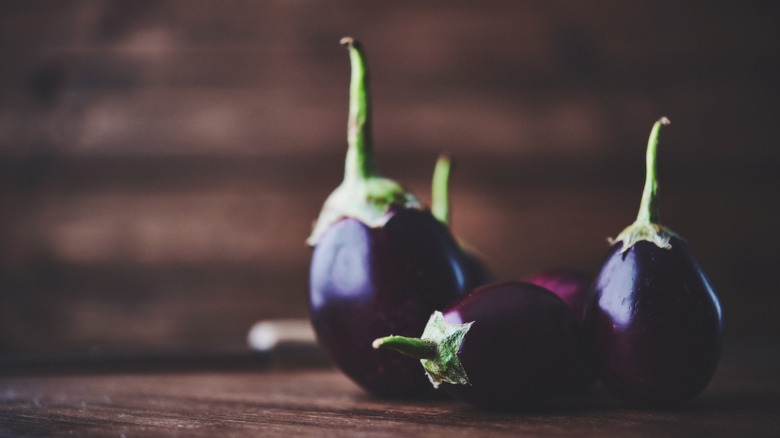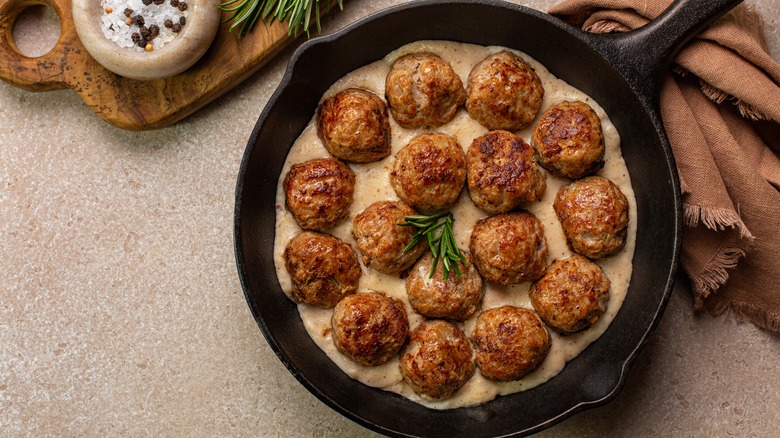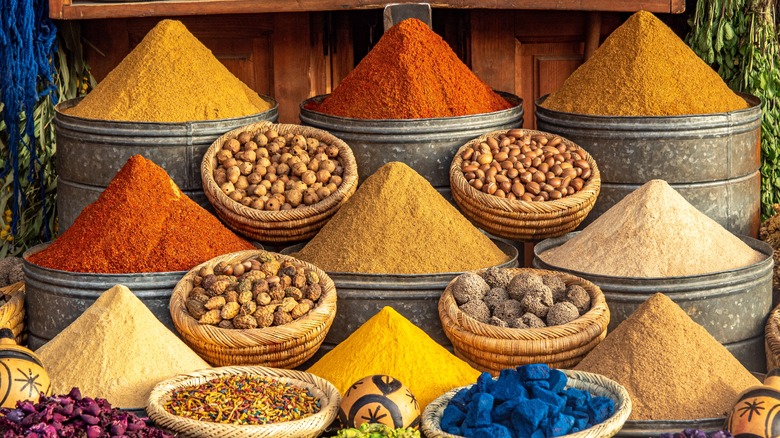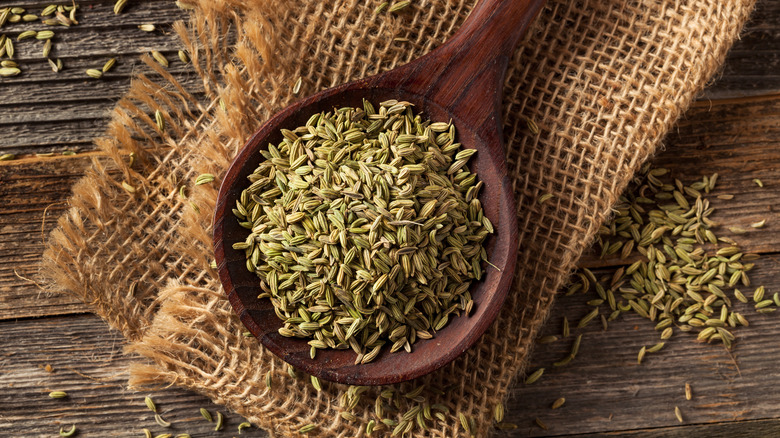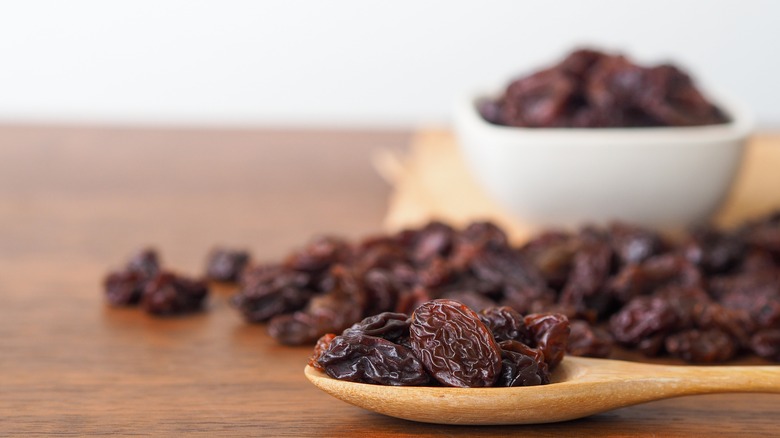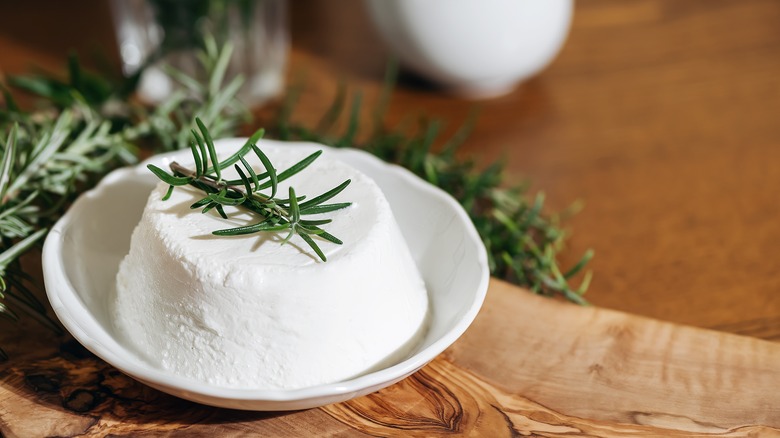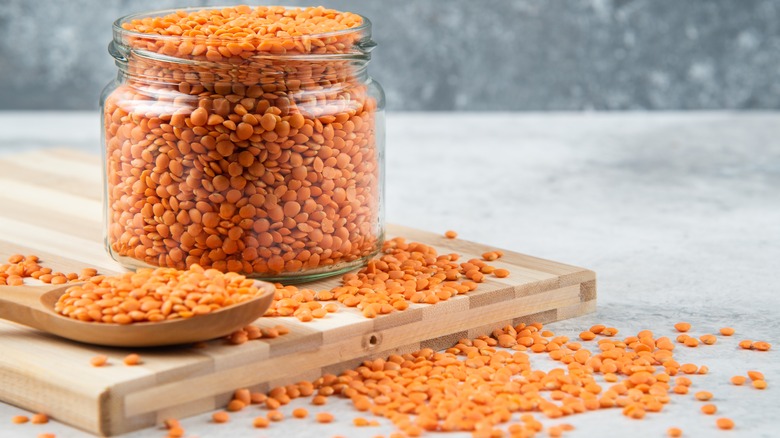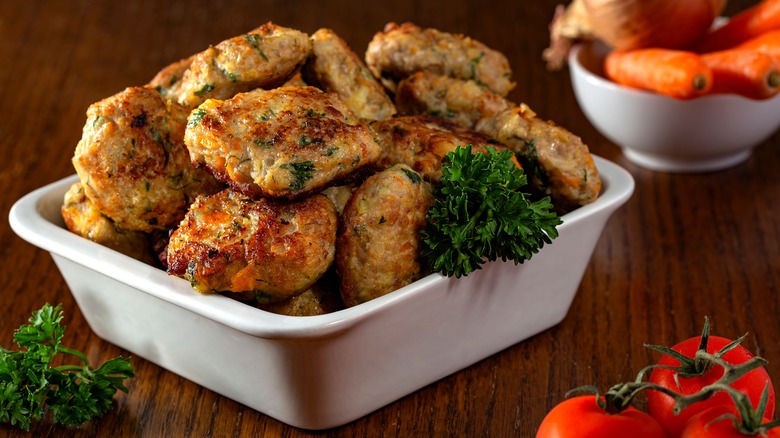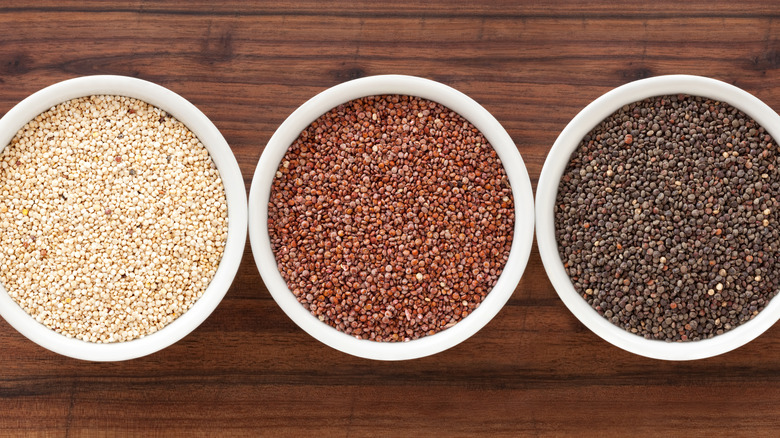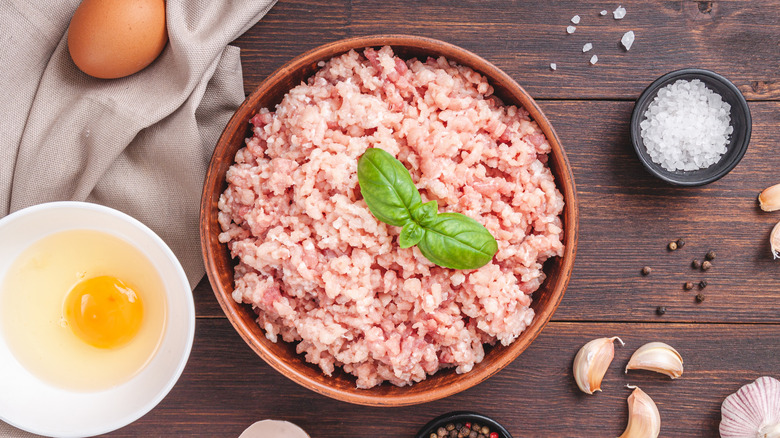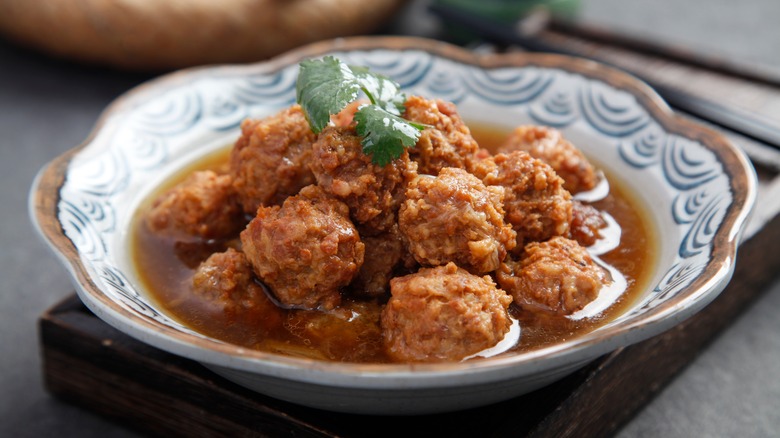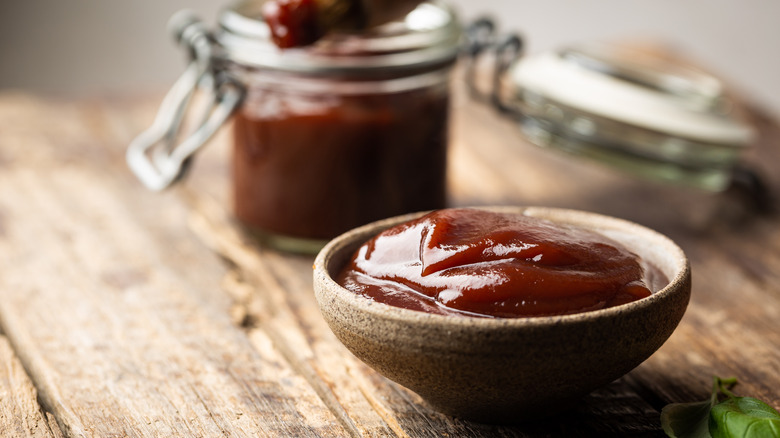14 Expert-Approved Ways To Upgrade Your Ordinary Meatball Recipe
Meatballs are one of the few dishes that can act as both a comfort food and a fine-dining food. Juicy, meaty, and invariably paired with carbs of some variety, they are mouthwateringly delicious and satisfying. Whether you're making them at home for a weeknight meal or ordering them from the finest Italian restaurant, they bring all the taste, texture, and richness you could ask for. According to Liz Krause, recipe blogger behind the website Simple Italian Cooking, there are several unifying factors in all good meatball recipes. "The essential elements of a delicious meatball are that it's moist, yet not grisly from the fat, and holds together when cooked in pasta sauce," she said. "Since more people today are wanting to bake their meatballs instead of frying them, I think the best meatballs are ones that are partially pan-fried, just enough to lock in the juices and then are finished cooking in the sauce."
Beyond these rules of thumb, there are many ways to play with the classic meatball formula. You can change the meat, add spices, opt for no meat whatsoever, and try out different styles from various global cuisines. To learn how home cooks can make meatballs even more delicious, we spoke with Krause as well as Sarah and Kaitlin Leung, founders of the Chinese recipe site The Woks of Life and authors of the New York Times best-selling cookbook "The Woks of Life." Keep reading to discover which ingredients they say will seriously upgrade ordinary meatballs.
1. Replace the meat with eggplant
Meatless meatballs are not the culinary contradiction they might seem. In fact, there are many ways that you can make the classic meat-based recipe vegetarian. One such option is to use eggplant. This purple nightshade has a rich, meaty texture when cooked, making it ideal for replacing ground meat in various recipes. When added to meatballs, it might not taste exactly like ground beef, but it provides something that is arguably better: a fusion of meatballs and eggplant parmesan.
When using eggplant for meatless meatballs, there are a few adjustments to consider. Since eggplant has a smooth texture when cooked, you might want to add some grains for a bit more bite, beans for greater durability and less mushiness, and nuts or additional cheese for added richness. Aside from these swaps, eggplant meatballs require similar ingredients to regular meatballs and can be served in the same way over spaghetti or in a meatball sub.
2. Incorporate wine into the cooking process
If you find a meatball recipe that has wine in the ingredients list, chances are, it appears in the tomato sauce rather than in the meatballs themselves. However, Sarah and Kaitlin Leung told Mashed that adding wine to the meatballs might be the secret ingredient that will unlock a whole new world of flavor. "We add Shaoxing rice wine to many Chinese meat fillings and meatball mixes," they explained. "It might be interesting to add wine to a meatball mixture. I might try cooking the wine -– perhaps sautéing some onions and garlic and then simmering them in white or red wine before cooling the mixture and adding it to the meatball mix."
Before adding wine to the recipe, make sure to learn more about how to cook with alcohol. For example, contrary to popular belief, the alcohol content will not fully burn off even if it's simmered. If alcohol isn't your thing or you're cooking for a group that includes children, the Leungs have another suggestion: water. "Chinese cooks often add water to meat mixtures," they said. "The meat absorbs the water, and the result is a very juicy meatball!"
3. Make them Swedish
There are two types of Ikea shoppers -– those who go for the Scandi-minimalist furniture and those who go just for the meatballs. In the U.S., Swedish meatballs are probably the most well-known style of meatballs aside from the Italian variety, and it's easy to see why. Full of spices and doused in a creamy sauce, they are indisputably a comfort food. If you've never tried them, you're in for a treat (and a surprise). As Liz Krause explained, "Swedish meatballs include a completely different set of spices such as nutmeg, paprika, and cinnamon, [versus] the standard Italian herbs of parsley, basil, and garlic. I think Swedish meatballs are enjoyed by so many because they are served in a milk-based sauce which is more like a gravy. I think this helps the meatballs retain their moisture which we all love. Also, I think they make perfect appetizers because of their bite-size appearance."
Although they are completely different from Italian meatballs, Swedish meatballs are not difficult to make. Our easy Swedish meatball recipe takes only 40 minutes to create from start to finish, and the results are even more delicious than the ones you can buy at Ikea.
4. Add a Moroccan spice blend
Spices are always a quick way to add flavor to a recipe. There are many options when it comes to meatballs, from a dash of paprika to heat things up to a sprinkling of nutmeg to add a hint of warmth and sweetness. One option that we just can't get enough of, however, is this Moroccan meatball recipe from Tasting Table. Made with cumin, paprika, red pepper flakes, and turmeric, it provides the perfect balance of heat, earthiness, and sweetness thanks to the inclusion of brown sugar.
If you'd prefer to improvise with your spices, Liz Krause cautions against overdoing it. "I think it's important to go easy on the seasonings with meatballs," she said. "Less is best. For example, too much garlic can overpower the flavor of the meat, and too many herbs can make it too busy." She noted that, as their name suggests, meatballs are first and foremost about the meat, and as long as you're using a fatty type of meat such as beef or pork, there will be plenty of flavor. Spices should enhance rather than define the recipe.
5. Add a hint of fennel
Sometimes a single ingredient is all you need to completely change a recipe. Whether you're making a dessert or a savory main dish, fennel is just such an ingredient. While it may be an acquired taste for some, it can be a crowd-pleaser when added in small amounts. In fact, we're willing to bet that it's the ingredient that will change your Swedish meatballs forever. Since the seeds provide a powerful flavor, you only need half a teaspoon for every pound of meat. Any more than that and you'll end up with meatballs that taste like licorice.
In addition to lending depth to the traditional mix of herbs and spices in Swedish meatballs, fennel seeds are a delicious ingredient in Italian meatballs. You can add them to the sauce to allow the tomato mixture to absorb their aromatic flavor, or add them directly to the meatballs for maximum impact. Make sure to keep Liz Krause's advice in mind: most of the flavor is coming from the meat, so err on the side of restraint when adding spices.
6. Add something sweet
Adding a sweet element to savory dishes, especially ones packed with delicious fat and salt, can take the recipe to new heights. Sugar helps amplify other flavors, directing your taste buds to the complexity of a dish and softening the sharp edges of bitter and sour ingredients. When adding sweetness to meatballs, one option is to hit two birds with one stone by incorporating a layer of moisture at the same time. Applesauce is the clever ingredient addition to get juicier meatballs. With its mild sweetness, it won't add a noticeably sugary element to the recipe, making it an ideal option if the idea of sweet meatballs is off-putting to you.
Another more noticeable option that Liz Krause suggested is raisins. Although this might seem like a bold and even risky choice, adding a burst of sweetness is common in other savory dishes, whether it's Hawaiian pizza or orange chicken. Raisins are also one of the easiest ways to add a sweet component because they do not alter the consistency of the meat mixture or require you to change the ingredient ratios. Simply toss in a handful before shaping the mixture into balls and marvel at the contrasting flavors.
7. Use lamb and mint
In Greece, meatballs are called keftedes and are made with fresh herbs like parsley and mint. They also often feature the bright sharpness and color of red onions and are frequently made with lamb instead of (or in addition to) ground beef. Rather than being served over pasta, they are usually served as an appetizer, as part of a mezze plate, or in pita bread. If you want to put a twist on a standard meatball recipe without changing its entire character, Greek meatballs are a great place to start. Full of fragrant herbs and the distinctive earthiness of lamb, they are a delicious departure from classic Italian meatballs, but similar enough to appease meatball traditionalists.
Our recipe for Greek meatballs makes the process simple, calling for a mixture of lamb and beef, red onion, fresh parsley, and fresh mint. It takes less than 30 minutes to make and is the perfect protein source to add to a Greek salad or gyro. If you want to serve them on their own, consider whipping up a batch of homemade tzatziki for added flavor and moisture.
8. Make them creamy with ricotta
There is an argument to be made that meatballs are rich enough as they are. When you're using ground beef, pork, or lamb, they are juicy and full of delicious fattiness, and maybe that's enough. But it's also true that meat can be a bit rubbery when left to its own devices, and a little bit of added creaminess can help make it more tender. This is where ricotta comes in. When you want nothing less than perfection for your meatballs, it will provide just that.
You don't have to take our word for it -– Food Network celebrity chef Michael Symon cites ricotta as his secret ingredient for deliciously soft meatballs. To ensure that they do not become too tender, Symon uses a ratio of one and a half pounds of ground meat to one cup of whole milk ricotta. This provides the perfect balance of silky tenderness and sturdy texture. Even though the ricotta plays a similar function to breadcrumbs, Symon still relies on breadcrumbs to ensure the mixture isn't too moist and delicate. A half cup per every cup of ricotta should do the trick.
9. Opt for lentils
One of the most popular options for making meatballs meat-free is lentils. These nutty legumes have a sturdy texture that makes them an excellent substitute for meat. They are also high in fiber and protein, and low in saturated fat, especially compared to meat like beef and pork. Even if you aren't actively trying to reduce your fat intake, however, lentils make a delicious alternative to meat-based meatballs with their rich, nutty flavor and filling dose of protein.
Our lentil meatball recipe adds plenty of other flavors to the mix to ensure no one is left disappointed with the taste. Mushrooms add to the meaty, plant-based texture and savory flavor, while fresh parsley, red onion, and tomato paste add depth and intensity. You can substitute these meatballs for classic meatballs in just about any dish, though recipe developer Miriam Hahn notes that they have a more delicate texture than beef-based meatballs and are therefore more prone to falling apart.
10. Try the potato-filled Romanian version
Romanian meatballs, known as chiftele, are not as common in the U.S. as Swedish or Italian meatballs, but they deserve more attention. For one thing, they have something that neither Italian nor Swedish meatballs can claim -– potatoes. For another, they use pork, which provides a slightly sweet, bacon-y flavor in contrast with the earthy richness of beef. With no powerfully flavored herbs or spices, they are the perfect alternative to classic Italian meatballs when you're cooking for picky or conservative eaters.
To make them, you will either grate or mash potatoes and add them to the meat mixture. The starchy vegetable makes the meatballs more tender than other variations, and contributes to the mild flavor. Many recipes also include dill, but you can leave it out if you're not a fan of it. Otherwise, chiftele are similar to their Italian and Swedish counterparts. Eggs and breadcrumbs are used to bind the meatballs into a cohesive and sturdy shape, and a skillet is used to brown them. When it comes to serving them, Romanian meatballs are often paired with a side of potatoes (because you can never have too much potato, right?), rice, or salad. They can also be swapped seamlessly with Italian meatballs in recipes with pasta and tomato sauce.
11. Add grains
One way to make classic meatballs healthier without resorting to a meat-free recipe is grains. Liz Krause suggested adding cooked bulgur wheat or finely ground oatmeal to a traditional Italian meatball recipe for this reason. Both these whole grain options provide fiber, texture, and an earthiness to complement the rich flavor of the meat.
Grains also come in handy when you're opting for vegetarian meatballs. As Sarah and Kaitlin Leung explained, "When it comes to a vegetarian meatball, ... you need several different ingredients to create a variety of textures. For instance, if using something soft like lentils, chickpeas[,] or beans, you may also want to add an element that has more bite to it, like brown rice or quinoa. This can help make them a bit more substantial! Ground nuts can also add some richness." They also noted that if you're making vegan meatballs and therefore are not using eggs as a binder, flax eggs will help hold everything together. Made by mixing water with ground flax seeds, flax eggs provide the binding properties of eggs without animal products.
12. Opt for a leaner meat
Traditional meatballs are indulgent. Based around fatty, juicy meat, they're the sort of meal that you probably don't want to eat every day for the sake of your arteries, no matter how delicious they are. However, you can get away with eating them more often if you simply swap the beef and pork with leaner meat. This turkey meatball recipe, for example, is easy to make and has plenty of herbs and spices.
Because fatty meat tends to have more flavor, Liz Krause noted that using leaner meat requires some extra steps to avoid blandness. "[I]f someone wants to use lean meat," she advised, " ... [T]hen simply add in some extra slices of bread that have been soaked in milk and then lightly squeeze out the excess liquid. This helps add back in some moisture offsetting the dryness. Also, add in a little more Romano or Parmesan cheese than you normally would to add some extra flavor that's lost from the absence of the fat."
13. Make lion's head meatballs
If you want to make a delicious version of meatballs, try lion's head meatballs. Just be warned -– they may make you reevaluate your loyalty to the Italian and Swedish variations of the dish. Sarah and Kaitlin Leung explained how the Chinese recipe compares to other varieties. "The most obvious difference is the choice of meat," they said. "Italian style meatballs are often made with beef, or a mixture of beef, pork, and/or veal. Lion's head meatballs are pork meatballs, and an extra fatty ground pork is preferred to ensure the meatballs are super tender and juicy. Another difference of course is in the seasoning. While Italian-style meatballs feature cheese and herbs, lion's head meatballs include ginger, soy sauce, rice wine, and five spice powder. Both use egg and breadcrumbs as a binder, but an Italian meatball mixture is generally firmer than a [l]ion's head meatball mixture. The meat mixture includes some water, and it must be whipped thoroughly to form a paste, to ensure that the texture of the final meatball is very uniform."
Lion's head meatballs also contain water chestnuts, an ingredient that doesn't often feature in any part of American or Italian cuisine, let alone in meatballs. "Water chestnuts don't add much to the flavor party," explained the Leungs, "[B]ut are generally used as a textural element ... You can find canned water chestnuts that are either whole or sliced. Either works for [l]ion's head meatballs, because you'll be mincing them anyway!"
14. Swap tomato sauce for BBQ sauce
When brainstorming ways to upgrade a standard meatball recipe, don't forget about the sauce. By changing the sauce, you can completely transform meatballs without touching the meatball recipe at all. For example, cooking them in BBQ sauce instead of marinara will have a profound effect on the overall flavor of the dish, even if you don't add a single ingredient to the meat mixture.
This crockpot BBQ meatball recipe has it both ways, incorporating deliciously sweet and sour ingredients into the meatballs and the sauce to provide an unforgettable burst of flavor. For the meatballs, you'll need ground beef, eggs, breadcrumbs, mustard, onions, garlic powder, and paprika. Once the mixture has been formed into balls, they will be cooked in a skillet or baked before being put in a crockpot and slow-cooked with BBQ sauce. After three or four hours, they will be tender and suffused with mouthwatering flavor. You might not want to serve these meatballs over pasta, but they provide the perfect appetizer for a large gathering, and you can even use them to make BBQ-inspired meatball subs.
